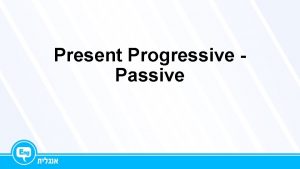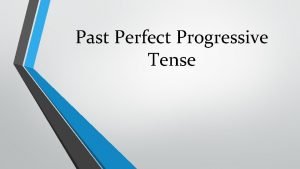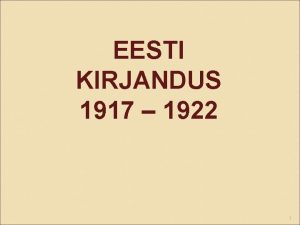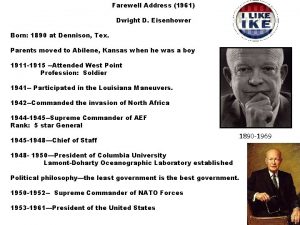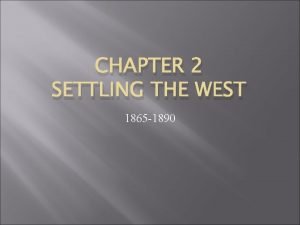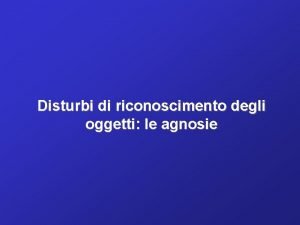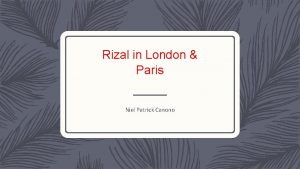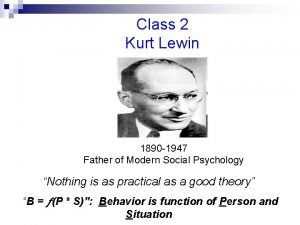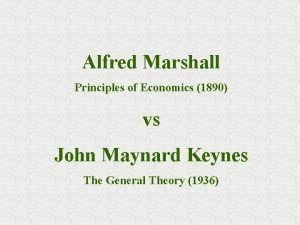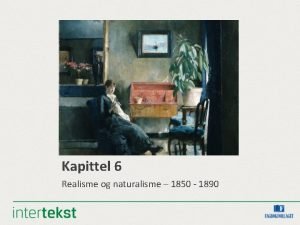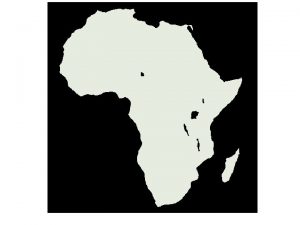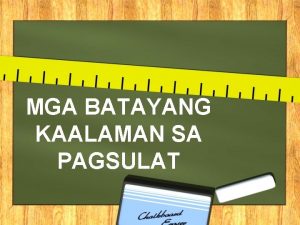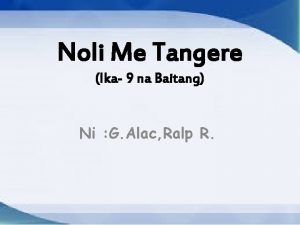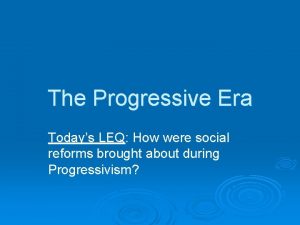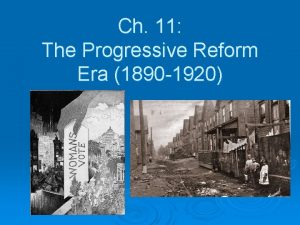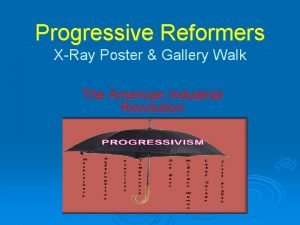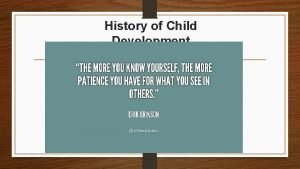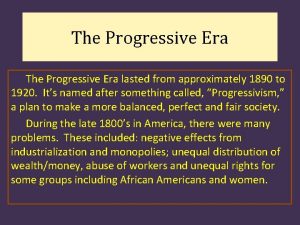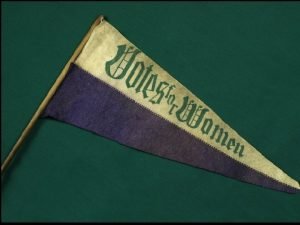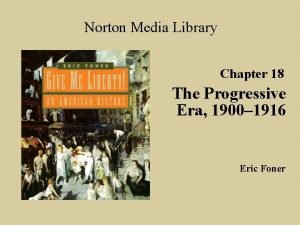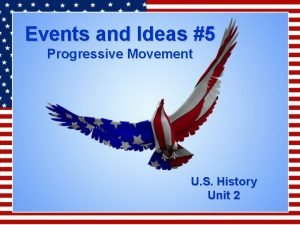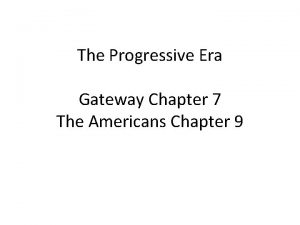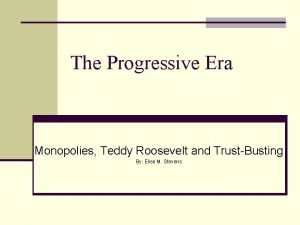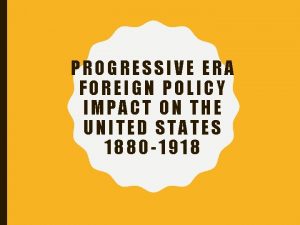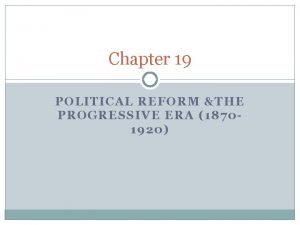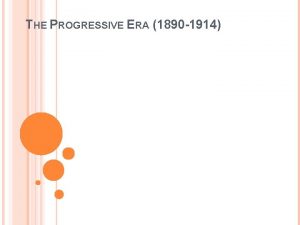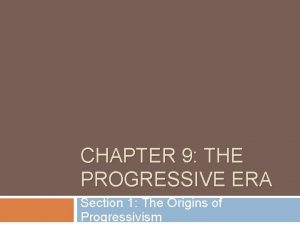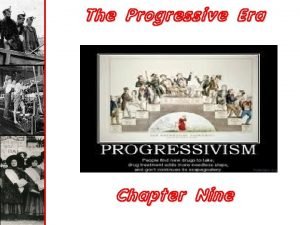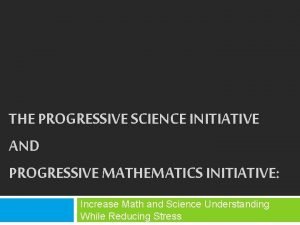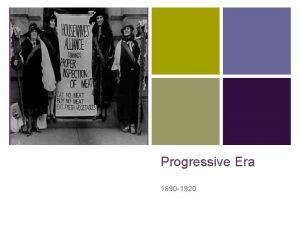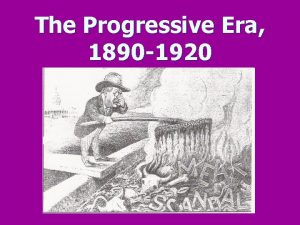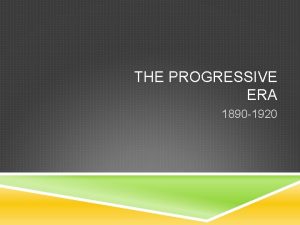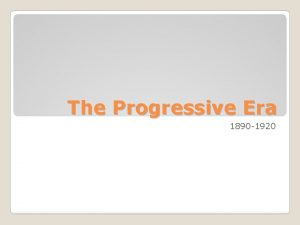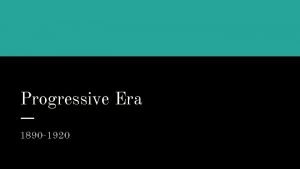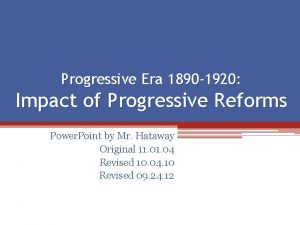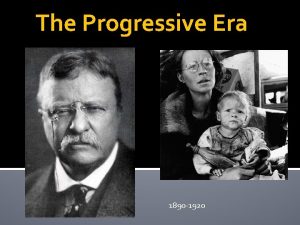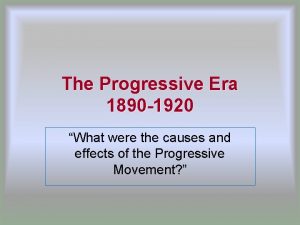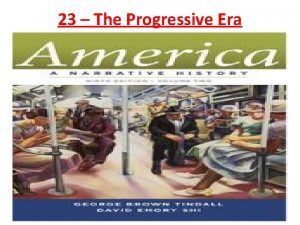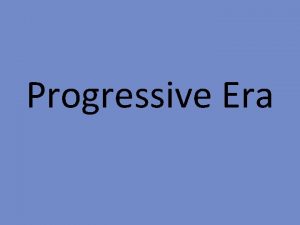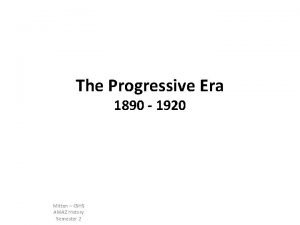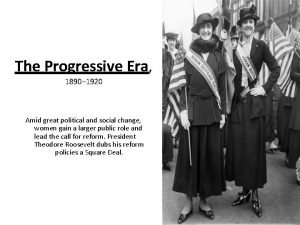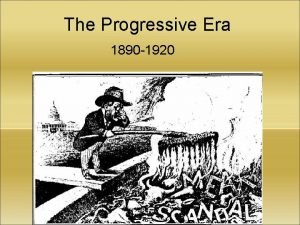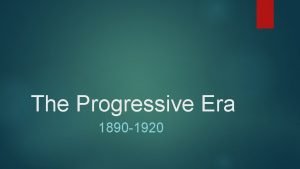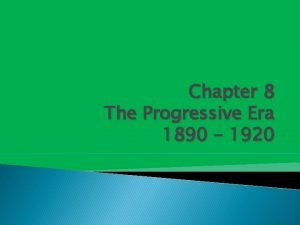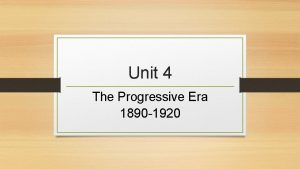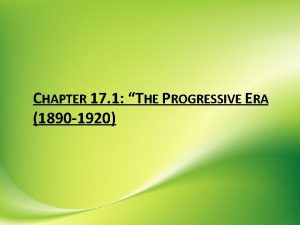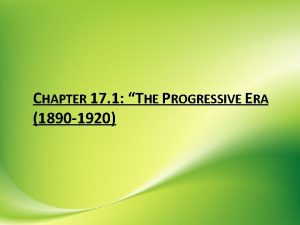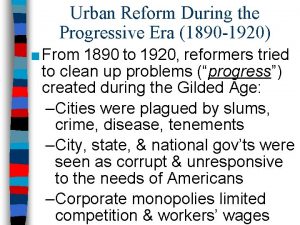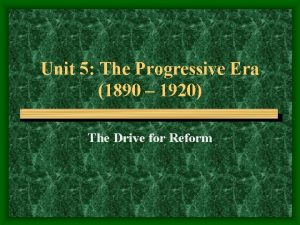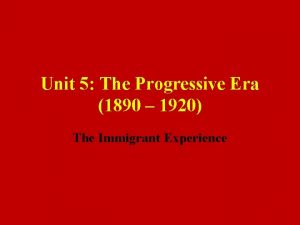THE PROGRESSIVE ERA 1890 1920 Who were the





































- Slides: 37

THE PROGRESSIVE ERA 1890 -1920

Who were the “progressives”? ■ * Progressives – individuals who believed that industrialization and urbanization had created social, economic and political problems. ■ * Progressives intended to use government to

ECONOMIC REFORM

■* Muckrakers – journalists who wrote about the need for reform in magazines, books and newspapers



Upton Sinclair’s: “The Jungle” • In 1906, author Upton Sinclair wrote “The Jungle” • In “The Jungle”, Sinclair describes the horrific conditions of workers in a Chicago meat-processing plant. • Outrage however ensued over the unsanitary conditions of the stockyard. • As a result, the US government passed the Meat Inspection Act and the Pure Food and Drug Act to improve safety of edible products.



The Jungle Excerpt ■ Page 556 ■ How does Sinclair’s way of writing boost his creditability? ■ How important was Upton Sinclair’s The Jungle on the passage of the Meat Inspection act? Explain. ■ What was the ultimate goal of the Jungle?


Ida Tarbell Vs. Standard Oil • Ida Tarbell – famous muckraker who wrote about the unfair business practices of Rockefeller’s Standard Oil Trust • Her book The History of Standard Oil highlighted the economic injustices of trusts and monopolies.

Social Reform

Jane Addams and the Hull House • Settlement Houses – community centers that provided services to urban poor. • Jane Addams – In 1889, she opened her own settlement house in Chicago called the “Hull House”. • Hull House provided educational opportunities, job training and child-care for poor women and their children.

Hull House

Jacob Riis’ “how the other half lives” • In 1890, Jacob Riis published “How the Other Half Lives”. • Book contained photographs of the despicable living conditions of urban poor forced to live in crowded tenements. • Brought reform to many of urban America’s poorest neighborhoods.

Exposing How the Other Half Lives ■ “Long ago it was said that ‘one half of the world does not know how the other half lives. ’…. It did not know because it did not care. ” ■ Jacob Riis, believing that the “poor were the victims rather than the makers of their fate, ” used images and words to make the public confront the conditions of New York City’s tenement slums. ■ Looking at the following pictures. What do Riis’s images reveal about the conditions of city slums? Explain. Was he an effective Muckraker?




• Jim Crow Engulfs the South After federal troops were removed from the South in 1877, Southern governments seized the opportunity to again deny blacks their Constitutional rights. • They instituted “Jim Crow Laws” – system of laws designed to deny suffrage rights for blacks and to segregate (“keep apart”) blacks and whites • Named after a famous character from minstrel shows named Jim Crow; whites dressed in “black face” to mock and make fun of African Americans.

Explain the Picture.

Jim Crow Denies Black Suffrage • Jim Crow laws worked to prevent blacks from fulfilling the right given to the by the 15 th amendment in several ways: • 1. poll taxes: blacks were forced to pay a tax in order to vote • 2. literacy tests: blacks were forced to pass a reading test before they could vote. • 3. grandfather clauses: only citizens whose grandfathers were allowed to vote could themselves vote.

Jim Crow Separates the Races • The Jim Crows South instituted a system of racial segregation. • Blacks and whites had separate restaurants, theaters, schools, park benches, railroad cars, hospitals, etc. • In 1896, the Supreme Court upheld the constitutionality of the Jim Crow Laws in its Plessy v. Ferguson decision. • Plessy v. Ferguson established the precedent of “separate but equal” facilities for whites and blacks.

How does this represent Plessy V. Ferguson?

What other groups were discriminated against?


NAACP Fights Racial Segregation • In 1909, the National Association for the Advancement of Colored People (NAACP) is formed to fight for social and economic rights of African Americans. • NAACP was made up of whites and blacks calling for an end to racial discrimination in not only the Jim Crow South, but all around the nation. • Members also sought to highlight the terror of lynching that was sweeping through the South.




Atlanta Race Riot 1906 What was the Atlanta Race Riot of 1906? What was the result?

POLITICAL REFORM

VOTERS GAIN MORE POWER • A series of legislation passed during the Progressive Era gave voters more say in how government operated. • Initiative – gave people the power to propose a new law through petition • Referendum – allowed citizens to approve or reject laws passed by Congress • Recall – gave voters to ability to remove corrupt public servants from office before their term ended • Prior to 1913, US Senators were appointed by state legislatures. However when the 17 th amendment is ratified, voters began directly electing US Senators themselves.

Roosevelt and the Conservation Movement • Theodore Roosevelt – President of the US (19011909) • Roosevelt created the National Park System that set aside millions of acres of wilderness areas to protect American wildlife and forests. • This system of “conservation” sought to limit industrial influence on the natural landscape.


National park system
 Passive voice in present progressive
Passive voice in present progressive Simple past past progressive past perfect
Simple past past progressive past perfect Structure of past simple
Structure of past simple 1890 computer
1890 computer Kirmus
Kirmus Born 1890
Born 1890 The population of smallville in the year 1890 was 6250
The population of smallville in the year 1890 was 6250 Native clothing
Native clothing Agnosia associativa
Agnosia associativa Pagsusuri sa kaligirang pangkasaysayan ng el filibusterismo
Pagsusuri sa kaligirang pangkasaysayan ng el filibusterismo Exponential functin
Exponential functin Patrick royston
Patrick royston Father of social psychology
Father of social psychology Alfred marshall principles of economics 1890
Alfred marshall principles of economics 1890 Realismen vs naturalismen
Realismen vs naturalismen Africa 1890
Africa 1890 Kognitib na layunin
Kognitib na layunin El filibusterismo mga taon ng pagsulat
El filibusterismo mga taon ng pagsulat Penholder tutuşu
Penholder tutuşu Progressive era leq
Progressive era leq Chapter 11 the progressive reform era
Chapter 11 the progressive reform era Progressive era posters
Progressive era posters Gilded age kahoot
Gilded age kahoot John dewey progressive era
John dewey progressive era The progressive era lasted from
The progressive era lasted from What is lincoln steffens known for
What is lincoln steffens known for Anne dallas dudley
Anne dallas dudley Give me liberty chapter 18
Give me liberty chapter 18 Progressive era worksheets
Progressive era worksheets Gateway to us history chapter 7 the progressive era
Gateway to us history chapter 7 the progressive era Trust busting progressive era
Trust busting progressive era Dollar diplomacy pros
Dollar diplomacy pros Chapter 19 political reform and the progressive era
Chapter 19 political reform and the progressive era When was the progressive era? *
When was the progressive era? * Chapter 9 the progressive era section 1 answers
Chapter 9 the progressive era section 1 answers What scandalous practices did upton
What scandalous practices did upton Wizard of oz progressive era
Wizard of oz progressive era Njctl math
Njctl math
